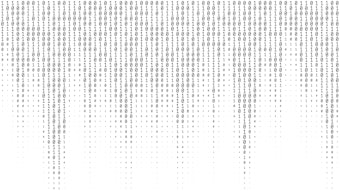From the Education Committees: How Is Your Time Valued?
Your time is precious, and many would agree that time is your most valuable asset.

Others see time value in a less mathematical sense and consider its worth in the context of happiness and meaning, adding in factors like how much happiness or meaning a task adds to your life. Some frame time as it relates to their potential professional work years, their “healthy years,” or the years they can spend with their children or other loved ones. These measurements are unquestionably just estimates, as we never really know how much time we will have our health or in our lives or the lives of loved ones. Values, opportunity costs, and the many ways people personally define work, distractions, joy, and worth all affect these assessments. This article from the Practice Management Education Committee will focus on a more narrow, specific, and tangible way your time is valued for you as a physician in the context of our current medical reimbursement system, the black box of Current Procedural Terminology (CPT) valuation. To give some historical context, recall that in 1992 Medicare significantly changed the way it pays for physician services. Instead of basing payments on charges, the federal government established a standardized physician payment schedule based on a Resource-Based Relative Value Scale (RBRVS). As part of the creation of the RBRVS in 1992, CPT codes, which were first published in 1966 by the AMA, were assigned values theoretically based on the principle that payments for physician services should vary with the resource costs for providing those services.
The AMA works with national medical specialty societies to recommend CPT code values, updates, and changes to the Centers for Medicare & Medicaid Services (CMS). The vehicle for this process is the multispecialty AMA/Specialty Society RVS Update Committee (RUC), which provides annual relative value recommendations to CMS. It should be emphasized that these are only recommendations. CMS assigns actual CPT values, as well as updates on payment policies, payment rates, and other provisions for Medicare services, through annual rulemaking on the Medicare Physician Fee Schedule. Medicare’s payment decisions for individual CPT codes are also the basis for many public and private third-party payer contracts.
In this RBRVS system, payments are determined by the resource costs needed to provide them, with each service divided into three weighted components (shown in parentheses): Physician work (50.9%), practice expense (44.8%), and professional liability insurance (4.3%). Your time is the physician work component, which is assigned a particular value in terms of RVUs and also minutes. The factors used to determine physician work include: 1) the time it takes to perform the service, 2) the technical skill and physical effort, and 3) the required mental effort and judgment and stress due to the potential risk to the patient. The RUC Panel that assigns these values for your time and work reportedly represents the entire medical profession, with 22 of its 32 members appointed by major national medical specialty societies, including the AAO-HNS. These individual RUC members are charged with exercising their independent judgment and cannot openly advocate for their respective specialties. The advocate role is delegated to separate advisors from each of the specialties who present recommendations to the RUC regarding CPT codes that pertain to their respective specialty.
So, where are these times and perceived efforts used to assign RVUs derived from? They come from the physicians themselves in the form of CPT valuation surveys. To establish value recommendations, the times reported by the few Academy members who actually complete these surveys are collated and presented to the RUC by the Academy’s physician advisors. Admittedly, these surveys are lengthy and often cumbersome. This is primarily because there are strict rules from the AMA on how these standardized survey instruments can be presented to the society membership. Despite the inherent challenges, it is from these few returned surveys that the work you perform is assigned time, valued, and ultimately paid. Though nuanced and often appearing imperfect and veiled, this is the process by which the many hours that physicians spend their clinical time is assigned a monetary value. Fortunately, the real value of what we do for our patients and communities, and the fulfillment that we receive from our privilege to serve them, is truly priceless.
















